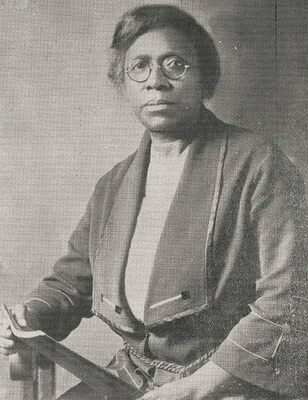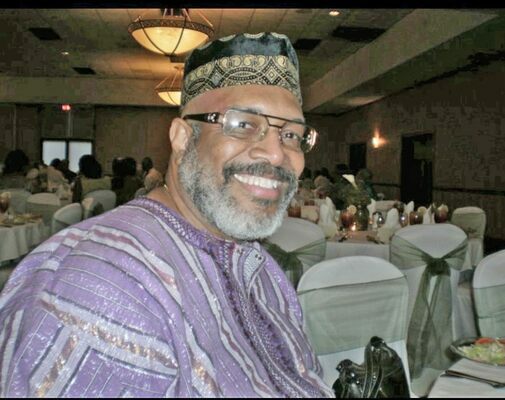Dr. Matilda Arabella Evans
Who was this lady? She is probably not known by many people reading this article but should be and hopefully, will be. She was remarkable in her achievements as well as in her love and compassion for AUSA (Afrikans from the United States of America). The following is a brief highlight of her life taken from my book, Sankofa University: Studying African Centered History and Culture (available on Amazon and Barnes and Noble on line).
Matilda Evans was born in Aiken County, South Carolina in about 1870, the oldest of three children. One of her great grandmothers was born “free” in Pennsylvania but was kidnapped and sold into slavery.
As a child and adolescent, she mowed hay for an abolitionist Quaker family named Schofield. Martha Schofield became her lifelong friend and supporter. Schofield started a high school for formerly enslaved Afrikans in Aiken that was named for her. This school is now a middle school since 1970 when most historically Black high schools in South Carolina were either closed or converted to middle or elementary schools because of integration.
Young Matilda attended Oberlin College in Ohio which was the first coeducational school in the United States, the first to award a college degree to a woman (in 1841) and also always admitted students regardless of race from its founding in 1833. While at Oberlin, she earned money by waiting tables but soon earned a full scholarship.
After her graduation from Oberlin, she was admitted into the Women’s Medical College of Pennsylvania in 1893 and graduated inn 1897. She returned to South Carolina and set up her practice in Columbia. She is believed to be the first native South Carolina AUSA woman to be licensed to practice medicine in South Carolina.
She opened a practice and soon also took in the children of her siblings after their deaths. According to her niece and nephew who I had the honor to interview, she actually reared eleven children and gave them all the opportunity to get a college education. She employed a lady to help with the children because of her busy schedule. All the children took music lessons and Sunday afternoons were marked by music concerts that also included the neighborhood children. Dr. Evans also played the piano.
When she traveled to medical conferences, she tried to take all the children.
She bought and operated a twenty-acre farm which she called Lindenwood Farm which was located near the corner of Two Notch Road and Beltline Boulevard in Columbia. The farm served several purposes. The livestock and vegetables helped to feed her family, her unfortunate patients and other needy community people. She had a swimming pool on the property and she offered the grounds for community use for picnics and games. According to an article written in The Charlotte Observer in 1932, she taught herself to swim so that she could teach children in the community to swim.
She organized and opened three hospitals for AUSA in Columbia at a time when AUSA patients were refused admission into white hospitals and AUSA physicians were refused admitting privileges.
She also organized a nursing school that was so respected that prospective employers came to graduations waiting outside.
Interestingly, despite the prevalent overt racism of the time, many of her patients were white and several white physicians also practiced in her hospitals.
Dr. Evans became interested in public health and in 1916, she published a short-lived public health journal for the AUSA citizens of South Carolina. It was called The Negro Health Journal. She also organized and had chartered the Negro Health Association of South Carolina, later called the South Carolina Good Health Association which attempted to place trained nurses and special welfare workers into each county in South Carolina.
She was a writer and published a book, Martha Schofield, Pioneer Negro Educator, in honor of her lifelong friend and supporter.
In 1918, she became a registered volunteer in the Medical Services Corps of the United States.
In 1921, she was elected president of the Palmetto Medical Dental and Pharmaceutical Association, South Carolina’s AUSA medical society, the first female in that position.
In 1930, she was elected to the board of trustees of Haines Junior College in Augusta, which became Lucy Laney High School.
Also in 1930, she organized the Columbia Clinic Association which raised money to provide free examinations and vaccinations for AUSA schoolchildren. On the first day of the clinic, they expected 150-200 children but saw more than 700 children. After the first few days, they had examined and immunized more than 3000 children, all free.
On July 27, 1931, the Secretary of State of South Carolina incorporated the Evans Clinic Association which included general medical services, dentistry, ENT services, mental hygiene and a weekly course for expectant mothers and fathers.
She died in 1935 after living a full life of selfless service to the AUSA community oof South Carolina. Her example is a beacon for today’s youth.
Food for thought.
Please support The Coastal Chronicles by subscribing today!
You may also like:




